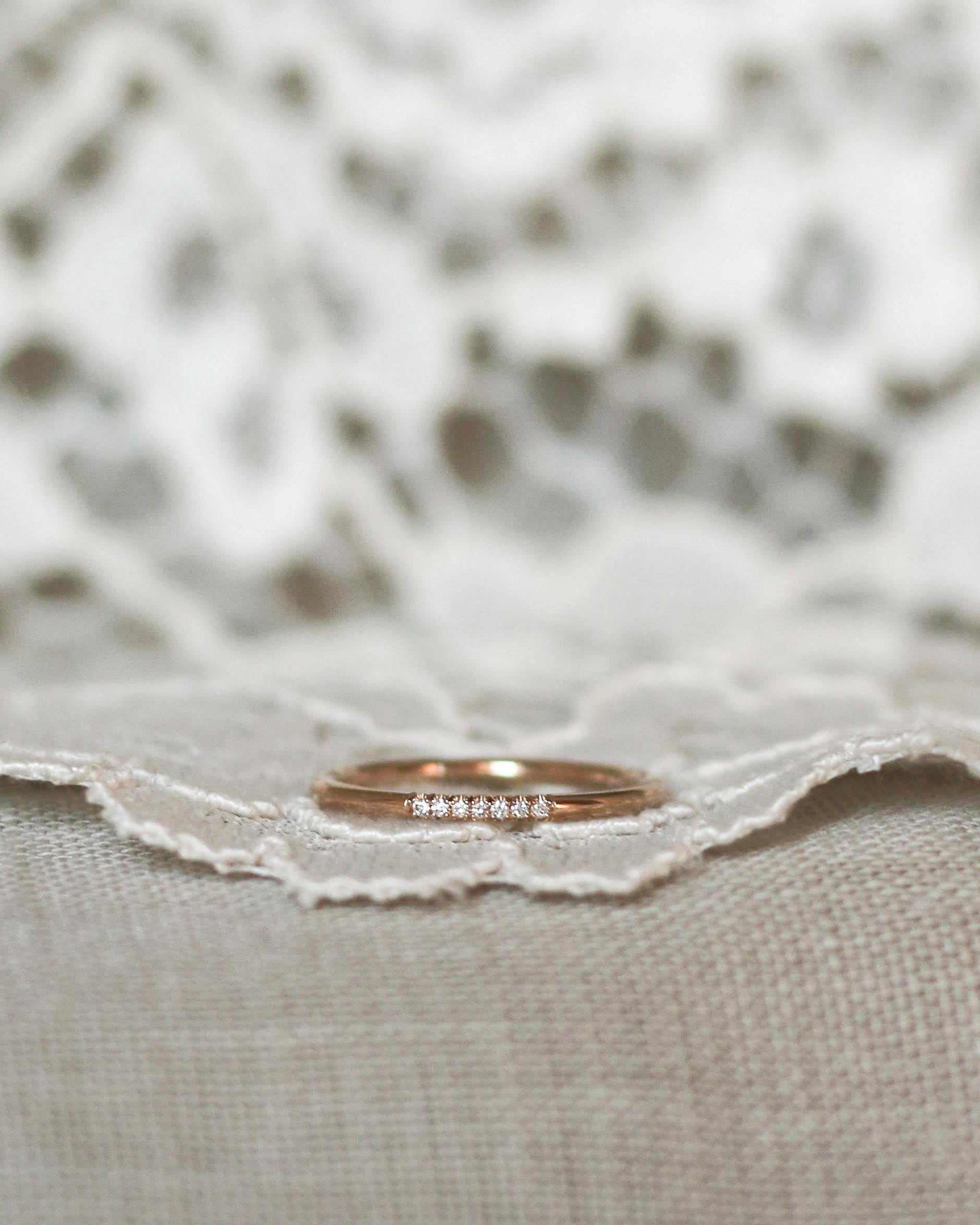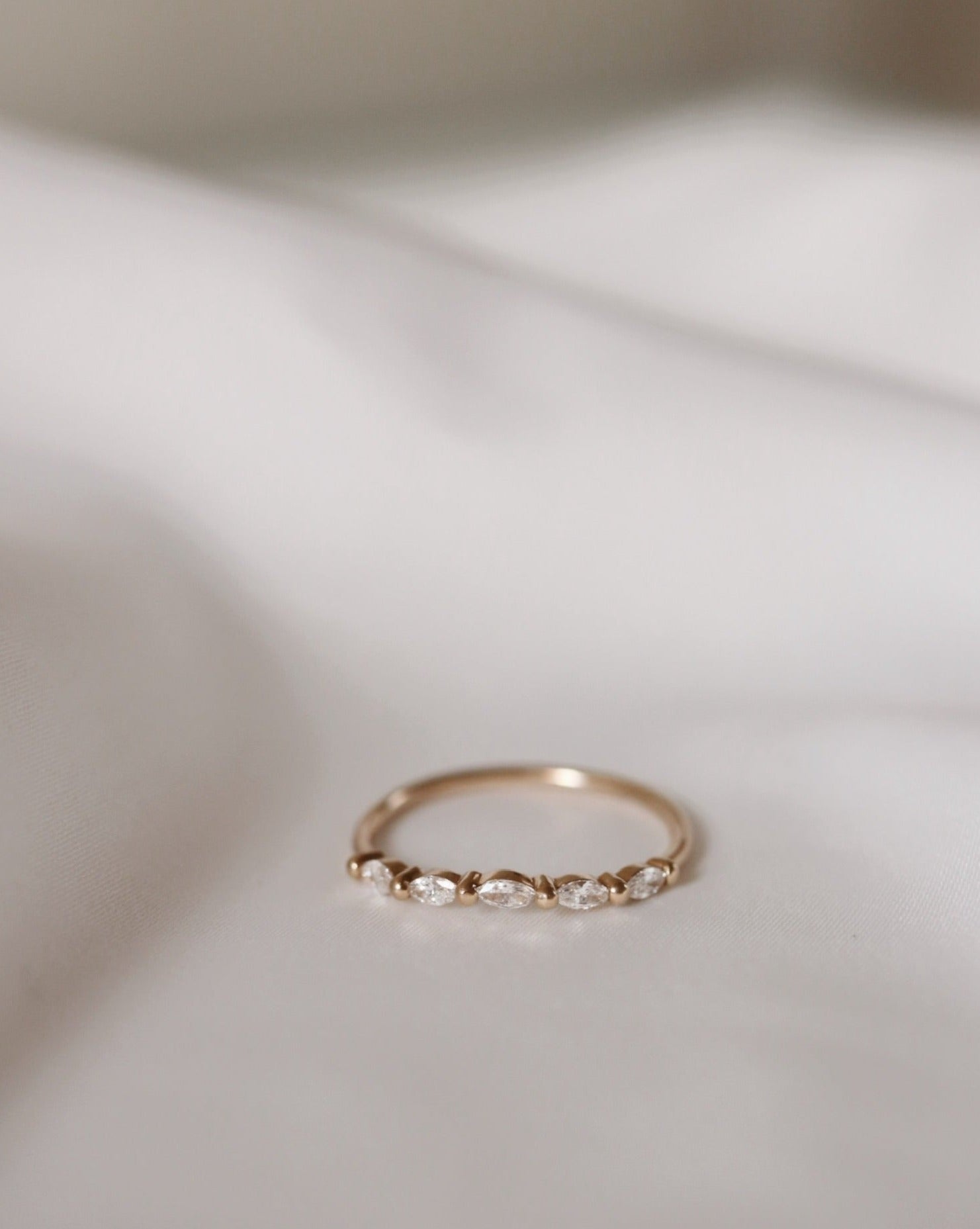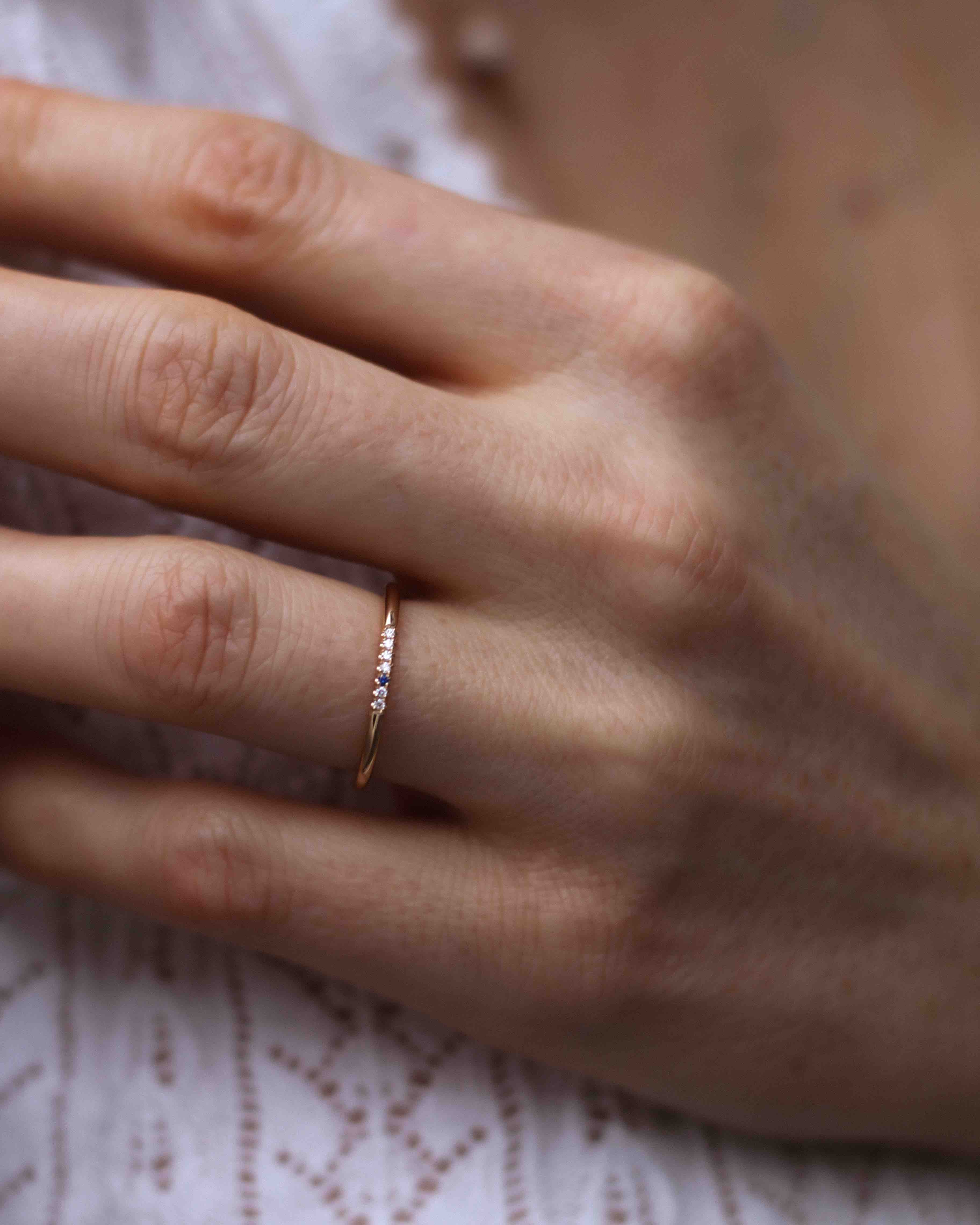About Our Champagne Diamonds and Chocolate Diamonds
The wonderful brown diamonds have become a signature for us that we are incredibly proud of!
Here you can read more about them.
Our Brown Diamonds
A champagne diamond and a chocolate diamond is a naturally brown diamond.
As there are no standard for "champagne diamond" or "chocolate diamond" on the world's diamond market, these are simply our own favourite shades which we have named Champagne and Chocolate respectively.
Colourless (the ones we call "white") diamonds are graded on a letter scale D-Z, but these are outside this scale. Therefore, we can handpick the brown diamonds we love.
We look for the perfect shade of brown when we buy our champagne and chocolate diamonds.

Champagne Diamond
A champagne diamond has a warm, beige, subtle sparkle that oozes vintage and old-school glamour!
Many of our customers who want to "tone down" the sparkle in all white diamonds choose champagne instead.
Champagne was the first brown shade of diamond we started using and still today it has remained one of our most loved gemstones!
A champagne diamond is a naturally brown diamond, in the certain tone that we have decided to name champagne. (There is not a "champagne diamond"-standard on the worldwide diamond market.)

Chocolate Diamond
The chocolate diamond has a medium brown tone that adds depth to your jewelry collection.
Because of its darker tone, it is often beautiful to combine chocolate diamonds with white diamonds in the same jewelry piece - it gives the brown diamond a lift!
Chocolate is a shade that is easy to like and can be combined with all colors of gemstones.
Also try matching it with cold colours of metals like white gold and platinum!

Dark Chocolate Diamond
Dark chocolate diamond is the most difficult shade to get hold of - often you need to be more tolerant with certain colour variations.
The challenge is to find a dark enough brown stone that still sparkles and "lives". When we succeed - the dark chocolate diamond is absolutely magical!
Dark chocolate is close to overtake champagne to become our most requested shade of brown diamond.
Try dark chocolate in an ombré that goes from champagne to dark chocolate, like here in Elise Ring Ombré.
Common questions about our champagne and chocolate diamonds
What is the clarity of champagne and chocolate diamonds?
Clarity can vary between SI and VS in your champagne or chocolate diamond. This is because when buying brown diamonds - just like when buying other coloured gemstones - it is the colour and cut that determine the assessment of the stone. As with all coloured stones, the clarity is completely subordinate to the colour, and it is the colour (and the cut - which decides the vibrancy, sparkle and liveliness in the stone) that determines the value of the stone!
Is my brown diamond the same shade as yours?
Unfortunately, we cannot guarantee that our champagne and chocolate diamond shades will be the same as a brown diamond sourced elsewhere, as there is no general standard for champagne and chocolate diamonds.
When we named our brown diamonds champagne and chocolate a long time ago (well, around 2016), most brown diamonds in Sweden were named "coffee" or "cognac". There are also names like "caramel", "cappuccino", "espresso" and "mocha".
Are they naturally brown or are they treated?
They are naturally brown and the colour is permanent - the stone will therefore always have the same color as when your jewelry was new.
Where do they come from?
Our brown diamonds are mined in South Africa and then cut in India.
Are they as hard and durable as white diamonds?
Like all other diamonds, champagne diamonds and chocolate diamonds have a hardness of 10 (highest) on Moh's Scale of Hardness.
Something that can also be good to know is that the durability is also determined by the clarity, as a stone with many inclusions splits more easily in the fragility that forms with an inclusion. As the brown diamonds we use have a clarity of at least SI, this is nothing to worry about. (Pique diamonds and below, such as salt and pepper diamonds that are highly enclosed, are more fragile, however.)
















































































